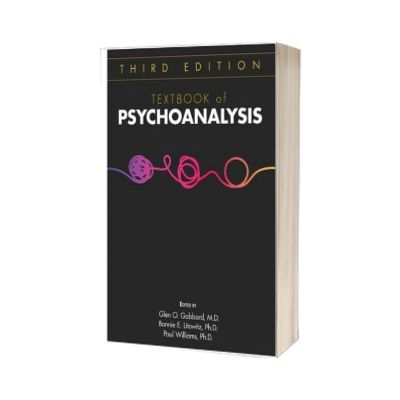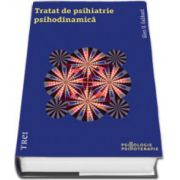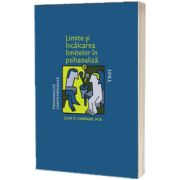Textbook of Psychoanalysis

DESCRIERE
Psychoanalysis is no stranger to evolution, but even for a field as accustomed to transformation as it is, the last several years have seen a profound shift in its practice—not least because of COVID-19 and social and cultural factors.
Whether those changes are permanent remains to be seen, but this third edition of the Textbook of Psychoanalysis addresses them head-on. Its first section includes not only how the pandemic has affected psychoanalysis but also how racial and ethnic tensions, redefined gender and sexual identities, and the effects of climate change have affected both the psychoanalyst and the patient, as well as the relationship between the two.
In subsequent sections, more than 40 contributors bring their expertise to bear as they discuss
- Diverse schools of thought, including object relations theory, self psychology, interpersonal psychoanalysis, and contemporary field theory
- Core concepts, such as the role of the unconscious in psychoanalytic discourse; transference, countertransference, and enactment; and contemporary theories of unrepresented states
- Techniques and approaches that include child analysis, the integration of psychoanalysis and pharmacotherapy, and the place of ethics in psychoanalysis
- Research, including psychoanalytic process research, developmental research, and neuroscience research
This volume's editors, in the Introduction, confess that none of us can predict the outcome of the changes that psychoanalysis—and, indeed, society—is facing. But, as another contributor later points out, psychoanalysis is a profession centrally concerned with what is not known and, therefore, may have a critical role to play in uncertain, extraordinary times.
With this new edition of the Textbook of Psychoanalysis, readers will have a firm foundation in psychoanalytic thought and practice from which to tackle today's—and tomorrow's—myriad unknowns.
Section I: Treatment in Unprecedented Times
Chapter 1. The Psychoanalytic Frame: Before and After COVID
Chapter 2. Race and Ethnicity
Chapter 3. Gender and Sexuality in Post-Binary Times
Chapter 4. Psychoanalysis and Climate Change
Section II: Schools of Thought
Chapter 5. Ego Psychology: Contemporary Freudian Psychoanalysis
Chapter 6. Object Relations Theory and the Role of Winnicott
Chapter 7. Kleinian and Post-Kleinian Psychoanalysis
Chapter 8. Bion
Chapter 9. Self Psychology
Chapter 10. Interpersonal Psychoanalysis
Chapter 11. Relational Psychoanalysis
Chapter 12. Contemporary Field Theory
Chapter 13. Jacques Lacan
Section III: Core Concepts and Technique
Chapter 14. The Evolution of the Unconscious in Psychoanalytic Thought
Chapter 15. Contemporary Theories of Unrepresented States
Chapter 16. Transference, Countertransference, and Enactment
Chapter 17. Therapeutic Change
Chapter 18. Termination
Chapter 19. Child Analysis
Chapter 20. Psychopharmacology and Psychoanalysis
Chapter 21. Ethics as Psychoanalytic Practice
Chapter 22. Clinical Consequences of Trauma and Dissociation
Chapter 23. Adjusting the Treatment to the Person
Chapter 24. Defense, Resistance, and Projective Identification
Section IV: Research
Chapter 25. Research on Outcomes
Chapter 26. Psychoanalytic Process Research
Chapter 27. Developmental Research
Chapter 28. Neuroscience Research









REVIEW-URI